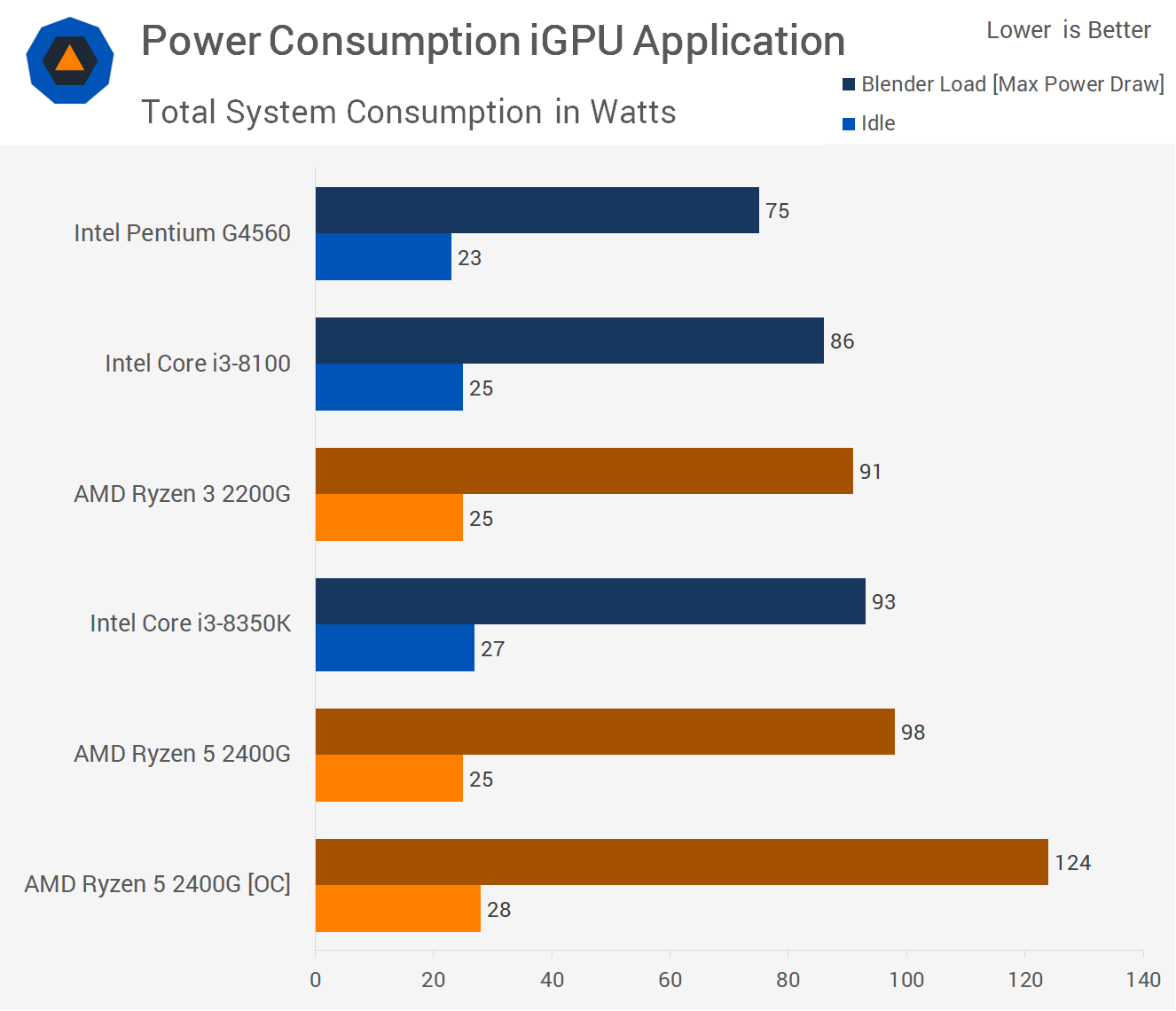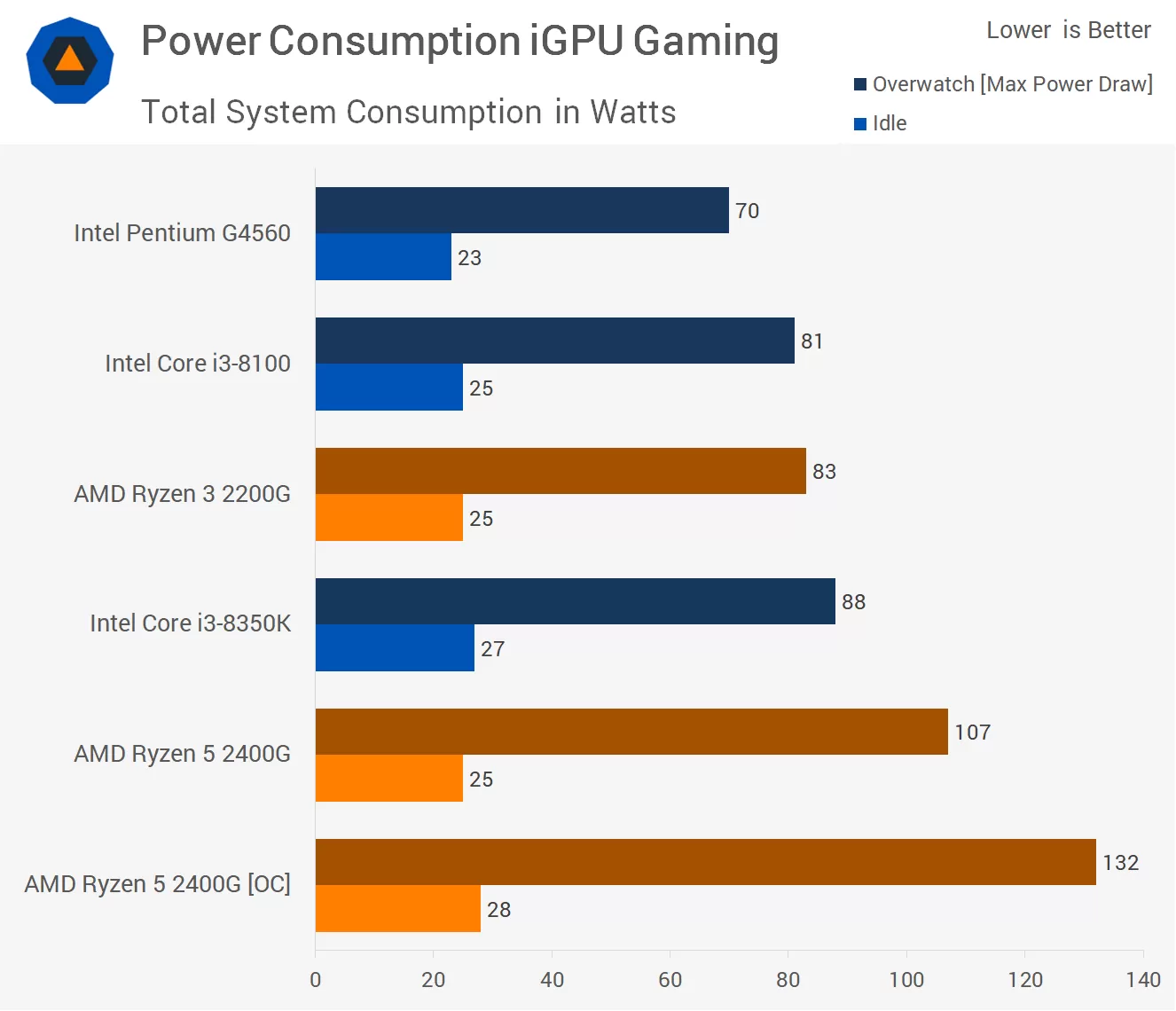Benchmarks: Power Consumption & Temperatures

This first lot of power consumption figures is with a GTX 1080 Ti installed. This is how we typically test desktop processors but I've conducted some extra benchmarking for these new APUs that we'll get to in a moment. With the GTX 1080 Ti installed and the 2200G under load in Corona, it consumes slightly less power than the 1500X while the 2400G consumed slightly more than the 1500X. What's interesting to note is that both consumed less when at idle and I should point out that the same motherboard and power supply was used for this testing.

These power consumption results are more representative as they were recorded using integrated graphics only for all the CPUs tested. Here we see that 2200G consumed slightly less than the Core i3-8350K and slightly more than the Core i3-8100, not bad but it was 11% slower than the 8100 in this test. The 2400G on the other hand was 8% faster than the 8350K but only consumed 5% more power, so SMT really helped to improve efficiency.
I've also included overclocking results for the 2400G and its Vega GPU. Running the GPU at 1.6GHz increased its power draw in this application by 27%.

When it came time to game, the 2200G again found itself positioned between the Core i3-8100 and 8350K despite delivering considerably better performance in Overwatch thanks to its Vega GPU. The 2400G consumed almost 30% more power than the 2200G, making the cheaper APU the more efficient option for gaming. Finally, we saw when overclocking the 2400G, power draw was increased by 23%.

Using the Wraith Stealth box cooler these are the temperatures we saw with an ambient room temperature of 21 degrees. Under maximum load in our Blender test we hit 67 degrees for the CPU and GPU on the 2200G and 74 degrees for the 2400G.
Gaming temperatures were lower. Playing Overwatch for an hour saw the 2200G hit a peak CPU temp of 60 degrees and a GPU temp of 57 degrees. The 2400G hit a similar 59 degrees for the GPU and 59 degrees for the CPU. I should note that overclocking the Vega GPU to 1.6GHz did push temps for both the CPU and GPU to around 90 degrees with the stock cooler, but I'll cover this in more detail some other time. Time to check out memory scaling.
